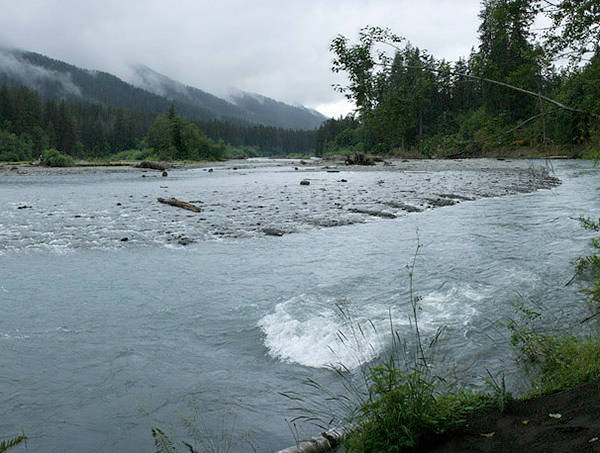By Pat Neal
Sometimes it’s fun to make fun of the silly questions that tourists ask like:
“Is the weather always like this?” Or “Why do loggers wear suspenders?” But it’s not so much fun when the tourists ask a question that is difficult to answer. That’s because tourists are generally a lot smarter than I am. Many of our tourists have traveled the world while I’ve been stuck here my whole life going nowhere fast.
In this age of information people who choose to spend their vacation on the Olympic Peninsula really do their research. Our visitors are very much aware of local environmental issues that have made the national news. Such as the plight of our Southern Resident Orca endangered by the extinction of our salmon. Sometimes tourists ask questions that are extremely difficult and painful to answer. It’s like the ultimate tourist’s revenge when they ask a disturbing question like,
“How has the river changed?”
That hurts. It’s like asking how a friend has changed after they died. The death of the river was a death that took years to achieve. Just a few years ago, the glaciers were much larger and when the spring melt began the river ran higher, colder, and with more volume longer into the summer.
Along about the middle of August the spring chinook, which entered the river in the spring and spent the summer in the river ripening their spawn, were laying their eggs in the gravel. As the month progressed the fish would spawn and die, carpeting the shore with their spawned-out bodies.
Bears came down to the river to catch salmon and spread fish remains across the forest floor. Bears were seen by the Native Americans as the mother of all creatures because they caught more fish than they could eat. They fed the other creatures that couldn’t catch fish for themselves. Science has confirmed this relationship by identifying an estimated 137 species of birds and animals that feed on spawned out salmon. In the process the remains of the spawned-out salmon were spread across the forest floor fertilizing the trees.
The smell was terrific. The water was alive with salmon thrashing in the shallows making a commotion that sounded like a herd of elk crossing the creek.
As summer turned into fall the biggest runs of salmon came upstream. The fall rains would flood the river and tributaries allowing the salmon access to the tiniest little creeks deep into the forest recycling the nutrients from the ocean to the forest and back again in an ecosystem that had functioned since the last ice age, until now.
These days the air along the river is fresh and pure. Which would normally be a good thing but the smell of fresh air is the smell of death on the river. With the salmon gone, the eagles, otters and even the mergansers have largely disappeared.
Once upon a time, people were allowed to help the salmon. They re-placed boxes of fertilized salmon eggs in the creeks. The fish would hatch and migrate out to sea without having to be fed at a hatchery for a year. Unfortunately, the use of remote hatch boxes to bring back the salmon in our streams is no longer allowed by the powers that be.
Instead, they build log jams with steel I beams and spray herbicides along the river to bring the salmon back. It is a shameful excuse for environmental stewardship that had done nothing for the salmon.
The fact is tourist questions aren’t so funny anymore.


